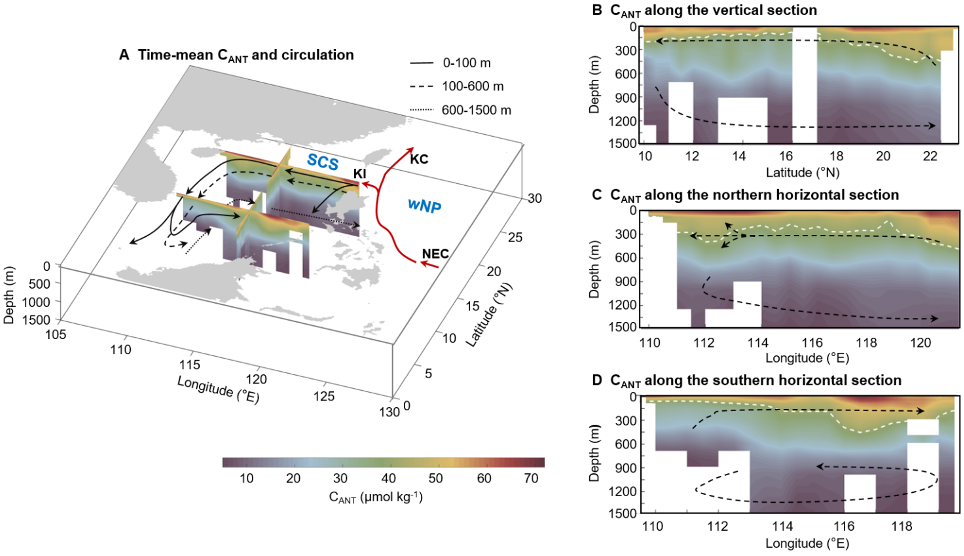Abstract
Coastal oceans, traditionally seen as a conduit for transporting atmospheric carbon dioxide (CO2)–derived anthropogenic carbon (CANT) to open oceans, exhibit complex carbon exchanges at their interface. South China Sea (SCS) exemplifies this complexity, where interactions with the Pacific, particularly through Kuroshio intrusion, challenge the understanding of CANT source and variability in a coastal ocean. Contrary to prevailing paradigm expectations, our high-resolution, long-term data reveal that CANT in the SCS primarily originates from Pacific water injection across the Luzon Strait rather than atmospheric CO2 invasion. Over the past two decades, the SCS has experienced increasing CANT levels, with notable interannual fluctuations driven by El Niño and La Niña events influencing Kuroshio intrusion, generating anomalously high and low CANT inventories, respectively. This highlights an overlooked CANT transport pathway from open to coastal oceans, responsible for cumulative ocean acidification that has already affected coral reefs enriched in the SCS located west of the Coral Triangle.

Wang Z., Z. Cao*, Z. Liu, W. Zhai, Y. Luo, Y. Lin, E. Roberts, J. Gan, and M. Dai* (2024), Pacific Ocean originated anthropogenic carbon and its long-term variations in the South China Sea, Science Advances, 10, 37.
https://www.science.org/doi/10.1126/sciadv.adn9171